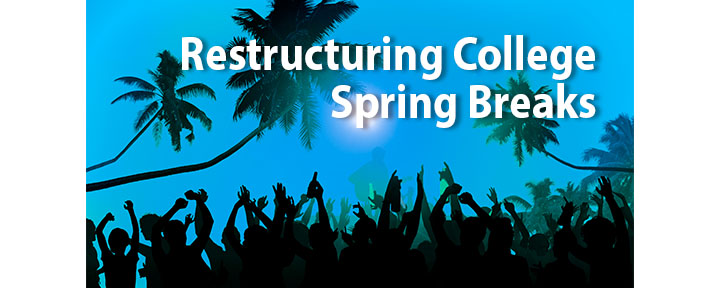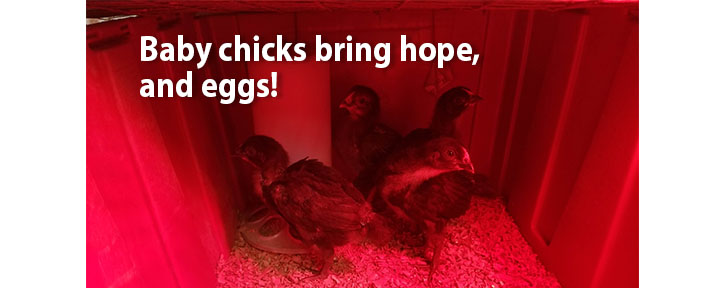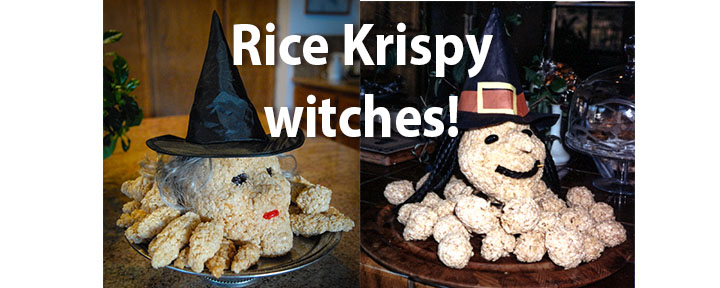
Remember the Varsity Blues Scandal? Well the University of California (Berkeley, Los Angeles, San Diego, and Santa Barbara) has admitted 64 students over the past 7 years who were not qualified. Yup! 22 who were admitted as student athletes who couldn’t compete on athletic teams, and 42 at UC Berkeley who were admitted because their parents donated money or they were related or connected to the university staff even though they didn’t have the competitive qualifications needed to be accepted. Wow.
UC Berkeley allowed admissions staff to request preferential treatment for relatives and donors by using a process that was designed to help applicants from disadvantaged backgrounds. Donor’s children, athletes, and even a babysitter of a colleague of the director of admissions got into UC Berkeley, even though they weren’t qualified. State auditors released a report with these findings yesterday.
When will the cheating stop?

Remember the Varsity Blues Scandal? Well the University of California (Berkeley, Los Angeles, San Diego, and Santa Barbara) has admitted 64 students over the past 7 years who were not qualified. Yup! 22 who were admitted as student athletes who couldn’t compete on athletic teams, and 42 at UC Berkeley who were admitted because their parents donated money or they were related or connected to the university staff even though they didn’t have the competitive qualifications needed to be accepted. Wow.
UC Berkeley allowed admissions staff to request preferential treatment for relatives and donors by using a process that was designed to help applicants from disadvantaged backgrounds. Donor’s children, athletes, and even a babysitter of a colleague of the director of admissions got into UC Berkeley, even though they weren’t qualified. State auditors released a report with these findings yesterday.
When will the cheating stop?

Colleges are facing budget cuts for health center medical staff, testing, and mental health because students are either not on campus or they’re worried about getting COVID-19 if they go to the campus health centers. They don’t want to pay for staff who is idly waiting for patient activity. But this is a problem because colleges really need to have vigilant testing for on-campus and hybrid classes offered now and especially when all students are invited back to on-campus living again. That means that they won’t have the funds for doctors and nurses to care for COVID-19 and other illnesses; coronavirus testing for all students, faculty and staff; and mental health staff to support the growing population of students who need psychological support.
It’s a Catch 22 situation – similar to what’s happening in hospitals today. Hospitals are laying off staff because people are delaying elective surgeries and not going to the hospitals for fear of getting COVID-19, when they really need the staff to be ready for the next wave or surge in cases. On one hand, it makes sense that hospital budgets have been cut because they don’t have the revenue they once had. They’re stretched thin so they cut back their staff. But on the other hand, if the hospitals don’t have the staff needed to handle the surge or for regular elective surgeries when they’re back on the schedule, they won’t be able to manage the sudden increase in their patient load.
On college campuses, they will need to be able to do aggressive testing as soon as students, professors and staff return to campus. This may be in a few weeks, months, or semesters. If they don’t have the budget to test all of their students and test throughout the semester or quarter, they won’t have the data needed to manage outbreaks. It’s vital that colleges have the resources to understand student behavior to prevent surges that may force colleges to quarantine and return to online classes – again.
Let’s hope that college administration on all campuses sets aside budgets that allow for staffing, testing, and quarantining to make a safe transition back to on-campus classes. Those colleges that don’t are penny wise, but pound foolish! Just think about how much more money (and lives) they’ll waste by having to send students home for online classes again.

Students, and their parents, are worried about how they will be evaluated by college admissions teams this year. When college-bound students can’t take the SAT or ACT because test dates have been cancelled due to coronavirus safety concerns and most students received pass/no pass grades last semester, how will colleges select qualified students for admission? Admissions officers claim that they are using a holistic approach to evaluating each application. But what does that mean?
Colleges consider GPA and the types of courses that the high school offers to be valuable elements because they can determine how the student ranks within their classes. In other words, they’ll know if the student may have been intimidated by honors, AP or IB courses because they took the easier path. But because of the chaos that took place last spring and even this fall, many students have changed direction to manage family and personal issues.
AP exams taken in May 2020 were considerably easier than previous years because the College Board restructured the test to be shorter and cover less content. How can that be fair when looking at the AP test scores from 2019? Then with technical difficulties on the actual exam days, many students didn’t get credit for AP exams because of they couldn’t submit their tests online.
The SAT and ACT exams have been cancelled in many areas from March to last weekend. Many juniors who expected to take the SAT or ACT in May-September have not been able to find testing centers. As a result, most colleges have offered a test-optional or test-blind policy for this year’s applicants.
Almost all sports and clubs have been cancelled since spring, upsetting athletes and active students from showing their best by winning games and reaching their goals.
So how does a student stand out when grades don’t reflect real aptitude, AP exams were easier, most students didn’t get to take the SAT/ACT, and extracurricular activities came to a screeching halt last year and haven’t started up for the new school year? Projects. They do individual projects that show their personal interests, tenacity, and innovation, and drive.
Students who do these projects demonstrate all of the qualities that colleges are looking for in their incoming classes. They want students who find their passions and pursue them with determination. Students don’t need to cure cancer or solve climate change, but they need to do something that supports their beliefs. I’ve written Beat the College Admissions Game with ProjectMerit to help students do projects. By brainstorming, researching, and organizing a plan to complete the project before 12th grade, students will demonstrate that they have the character, brilliance, and gumption to be successful at the best colleges.
But be careful not to do a project just to impress college admissions officers. With the void in GPAs, SAT/ACT scores, AP scores, and extracurricular activities, students, and their parents, are rushing to start projects for all the wrong reasons. College admissions officers are savvy to students who make false claims (think Varsity Blues), have parents or tutors do their projects, or simply do the bare minimum so they can write their personal statements about something. I work with hundreds of students and guide them so they find their passions and create projects that they’re proud of. That’s what it takes to make a college application stand out amidst the chaos of 2020. Do a project because you believe in it, and then, so will the college admissions officers!

Looks like colleges are restructuring Spring Breaks for 2021. After last year’s spikes in COVID-19, many colleges have eliminated spring break entirely. Instead, some are starting semesters/quarters earlier or later. Others are spreading the 5 days (for spring break) over several weeks giving days off mid week or 3-day weekends. I think 3-day weekends may still entice college students to take a long weekend to splurge in a more intense and condensed version of their normal spring break excursions.
With just 3 months to the start of the new term in college, looks like many are continuing the same offerings they committed to for fall term. If they’re online, on campus, or hybrid, they’ll most likely continue the same for spring. So much is still unknown about how this pandemic will play out this fall and winter.
One thing we do know it that we need to stop spreading the coronavirus in order to move past this and recover. I think we should all shelter in place and quarantine as much as possible so this pandemic doesn’t drag on for months – or even years.
Looks like colleges are restructuring Spring Breaks for 2021. After last year’s spikes in COVID-19, many colleges have eliminated spring break entirely. Instead, some are starting semesters/quarters earlier or later. Others are spreading the 5 days (for spring break) over several weeks giving days off mid week or 3-day weekends. I think 3-day weekends may still entice college students to take a long weekend to splurge in a more intense and condensed version of their normal spring break excursions.
With just 3 months to the start of the new term in college, looks like many are continuing the same offerings they committed to for fall term. If they’re online, on campus, or hybrid, they’ll most likely continue the same for spring. So much is still unknown about how this pandemic will play out this fall and winter.
One thing we do know it that we need to stop spreading the coronavirus in order to move past this and recover. I think we should all shelter in place and quarantine as much as possible so this pandemic doesn’t drag on for months – or even years.

We just cut down 3 huge evergreen-type trees in front of our house. They’d been there for the past 35 years and they were part of our landscaping. When the fire inspector and deputy fire marshal told me that those 3 trees could cause my house to catch fire, I knew I had to remove them. Check out this video that shows how easily this tree could ignite my house. It took me a week of weighing the pros and cons of having my house catch fire and cutting 3 mature trees that produced oxygen when we just lost 3.2 million acres of trees since August. I’m continuing to remove all potential fire hazards within 5 feet of my house. This home hardening may actually save my house should a wildfire come into my neighborhood.

Just picked 2 quarts of raspberries and blackberries. There’s just something special about picking berries off the vines and sharing them with my daughter Nicole. They’re the only fruit that we grow that birds don’t devour before we get to them. I’ve been fertilizing them with coffee grounds and wonder if that’s why we’re having a bumper crop this year.

So excited to have 4 new chicks! Not sure what kind of chickens they are but they’re baby hens and they’ll each produce one egg per day! We have 2 full grown Americauna chickens that produce pastel-colored eggs – fun because they’re pretty. With all the devastation caused by wildfires, it’s soothing to have little chicks that will enjoy our chicken coop and produce fresh eggs each day!

Are you confused about what to do if a wildfire heads your way? You hear about people who refuse to leave their homes during evacuations — and die. Then you hear about people who do leave their homes but could have saved them by staying home and putting out embers that get caught in their eaves. As 2019 California Mother of the Year, I’ve been blogging about fire prevention for 2 seasons and thought I understood everything there was to know about fires. I was wrong.
I just met with Tony Akin, fire inspector, and Marco Mack, deputy fire marshal, last week to make sure my house and acreage were safe from wildfires. We had just completed our weed whacking and limbing of trees to clear 100 feet from our home. Because we’re located on a steep hillside in a gulch, the way a fire would approach our house is different than how it might approach our neighbor’s house on the other side of the hill. They recommended that I remove 3 trees that were next to the house and the trumpet vines that I had meticulously groomed up the wrought iron railing to my front door.
Apparently, these 3 trees and the trumpet vines would light up and create a direct line of fire to my front door! Who knew? I’m chain sawing the trees and removing the vines next week! Then I learned that if I replaced my ¼” attic screens with 1/8” screens, they could prevent embers from flying into my attic and starting a house fire. New 1/8” screens are going in next week too! They told me that those little embers could lodge themselves in the tiny spaces around our fascia boards. By just caulking around fascia boards, I could prevent an ember from destroying my house. Phew, I can do that!
To manage the risk of a fire approaching my home when it’s not safe to drive away, the Fire District recommends that I work with my neighbors to establish Safety Zones. This is an area that will provide a safe location for the type of fire intensity that is approaching my location. It would be protected from radiant heat, have no combustible vegetation, have hardened structures to prevent ignition, and be in the area that doesn’t support high-intensity fires. This safety zone will need to be updated each year to ensure that the location continues to be hardened and safe.
They recommended that I go across the road to the Locatelli Ranch because it is a proposed Safety Zone. There’s enough clearing there for many neighbors to be safe from high intensity wildfire. A Safety Zone is a good alternative when your evacuation route may not be safe including a drive down our one- and two-lane road, where your car is stopped at a bottleneck disaster like what happened in Paradise in 2018. Please work with your Fire Department to validate possible Safety Zone locations.
Residents in rural areas, like me, who might become trapped outside during evacuation or plan to escape to an outside Safety Zone, should prepare a go-bag with safety clothing that will resist burning embers and protect your hair and skin, and safety goggles to protect your eyes.
Every home has different problems and will encounter fire behavior in different ways. This is just my situation and what I can do to mitigate wildfires. You can contact your local fire inspector to give you free advice on how to protect your home and what to do if a wildfire approaches your home. If you live in Soquel/Capitola, call 831.316.3803 or email RSG@centralFPD.com; Aptos, call 831.316.3804 or email RSG@aptosfire.com. This was the most important meeting I’ve had about how to protect my family and home. You can also take a class at your community college on fire prevention or hire a certified contractor who can advise you and do the work needed. Take action now to protect your homes from wildfires!

I love Halloween and have put on major productions and parties for decades. But this year, celebrating Halloween during a pandemic will take some creativity. Kids like to dress up, get tons of free candy, play games, and eat sweet treats – right? So you can make Halloween even MORE fun during a pandemic. Here’s how:
1. Rice Krispy Treat Witches
Everyone loves Rice Krispy treats! The ooey gooey marshmallow concoctions are irresistible. Make 4-5 batches with your kids and sculpt a witch’s head. The kids can roll witch’s fingers and cut out fruit roll-up nails. Make this the weekend before Halloween for decorations and tempting sweets all week.
2. Costume Planning
Brainstorming and designing costumes are just about as exciting as actually wearing them. Look online to get ideas about costumes the kids can make. Start 2-4 weeks ahead of time so you can buy accessories and have everything you need by Halloween. You can also save shipping boxes and have the kids design costumes out of things you have around the house.
3. Trick-or-Treat Treasure Hunt
Instead of going door to door demanding sweet treats on Halloween, hide miniature candies – the same kind of candies they would get going to neighbors’ homes – all over the house. Place them in pockets, under cushions, on top of books, inside shoes, in the yard, and in flower beds. Count the candies before you hide them so the kids know how many candies they need to find. This can take hours and it’s sure to be a lot of fun. Think: Easter Egg Hunt! My kids used to love this so much they would play it several times, and then hide the candies for us!
4. Costume Parade
On Halloween night, your kids can stand in front of your house on a make-shift stage wearing their costumes. As people drive by, they can wave and say “Trick or Treat!” You can encourage neighbors and friends to participate by posting a sign on your lawn – “Drive by to see our Halloween costumes at 7:00 pm on Halloween!”
Talk to your kids about how they want to celebrate a pandemic Halloween this year. Mark your calendars to give them plenty of time to design costumes, make Rice Krispy Treat witches, create a platform and signage for the costume parade, and layout rules for the treasure hunt. You may start a new family tradition this year, and you’ll certainly create memories!

Glad to hear the inmate crew members who have fought wildfires under the supervision of Cal Fire and firefighters will be able to apply to become firefighters when they get out of prison. California Governor Newsom just signed the bill that will reduce the red tape that has prevented inmate crews from becoming full-fledged firefighters upon their release.
These inmate crew members go through rigorous training and do lots of the heavy lifting while fighting fires. They’re paid barely $3 per day and they often work for longer than 24-hour shifts. Working to stave off wildfires to protect lives and property gives them a strong sense of pride and teamwork. Isn’t this what rehabilitation is all about?
These inmate crew members aren’t sex offenders or violent criminals, and they aren’t at risk of escaping. When they’re released from prison, their records may be expunged for completing their sentences, which will allow them to become Emergency Medical Technicians (EMTs). Then, they can apply to become firefighters with their EMT certifications.
With wildfires destroying millions of acres on the west coast, we need more inmate crews to support Cal Fire and our firefighters.
